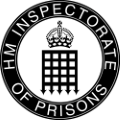HMP Leeds – creative leadership trying to transform a difficult prison
Inspectors to HMP Leeds, a reception and resettlement prison dating back to the 19th century, found a prison struggling to improve safety outcomes, although meaningful work was taking place across all of our healthy prison tests.
Our findings confirmed to us that Leeds is a well-led prison and that leaders and managers were visible about the wings and had a realistic understanding about the challenges and opportunities, and that priorities were communicated successfully to staff and prisoners.
However, prisoners at Leeds were still not safe enough, and there had been eight self-inflicted deaths since our last inspection in 2019 and more work was needed to address this for the future. The number of incidents of self-harm was lower than at our previous visit, but some had been very serious. Prisoners who self-harmed regularly received proactive support and the care planning process helped those at risk of self-harm. In our survey prisoners described being well cared for. A new complex needs unit had been set up, although inspectors did not see a clear strategy for effective use.
The forbidding appearance of the old Victorian jail had been tackled by a combined staff-prisoner group which had completed some impressive work to transform the external environment, with wall murals and artwork creating a positive atmosphere. Cells were generally clean, but the prison was significantly overcrowded with 80% of prisoners sharing a cell designed for one.
There had been 18 deaths from natural causes in the last two years which was very high, but Leeds had a social care unit as well as a palliative care suite, which meant that the prison held a higher number of men with severe or terminal illnesses. The prison had responded to well to the Prisons and Probation Ombudsman’s recommendations following investigations into these deaths, and no thematic concerns had been identified.
Prisoners did not receive enough time out of cell. Unemployed prisoners were only spending an hour a day unlocked, and some of the men reported that this was having a detrimental impact on their emotional well-being.
Mr Taylor said:
“Overall, this was a decent inspection of HMP Leeds. The prison had a capable and settled leadership as well as an experienced officer group. In most areas, outcomes were either reasonable or improving. Going forward, leaders must focus on efforts to reduce the number of self-inflicted deaths and be more ambitious in delivering a meaningful regime.”
Notes to editors
- Read the HMP Leeds report, published on 29 September 2022.
- HM Inspectorate of Prisons is an independent inspectorate, inspecting places of detention to report on conditions and treatment and promote positive outcomes for those detained and the public.
- HMP Leeds is a category B reception and resettlement prison in West Yorkshire.
- At the time of this inspection, the prison held 1,092 prisoners.
- Inspectors identified five examples of notable positive practice during this inspection.
- This inspection took place between 13 and 20–24 June 2022.
- Please contact Elizabeth Barker at elizabeth.barker@hmiprisons.gov.uk if you would like more information.
